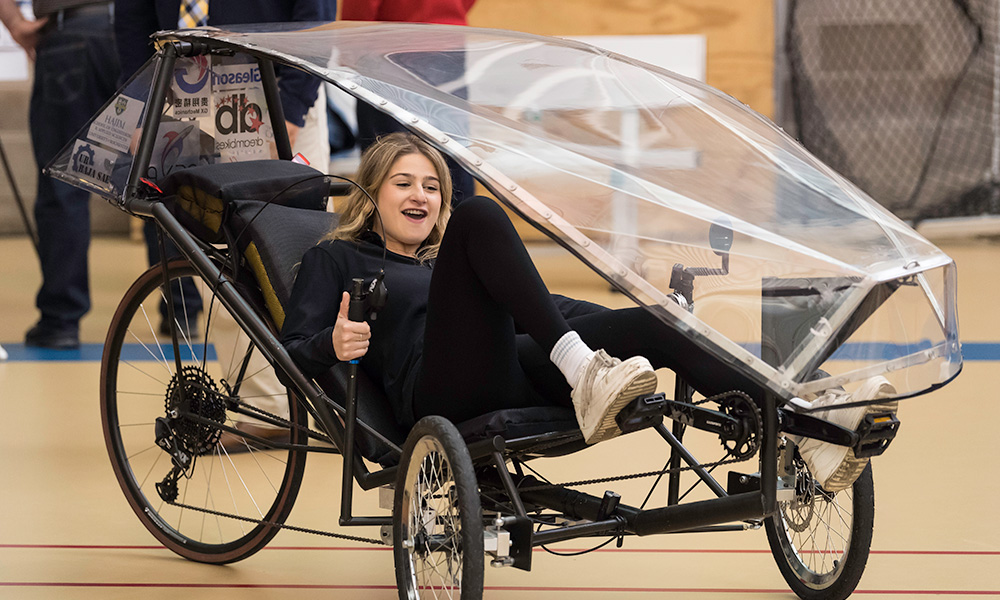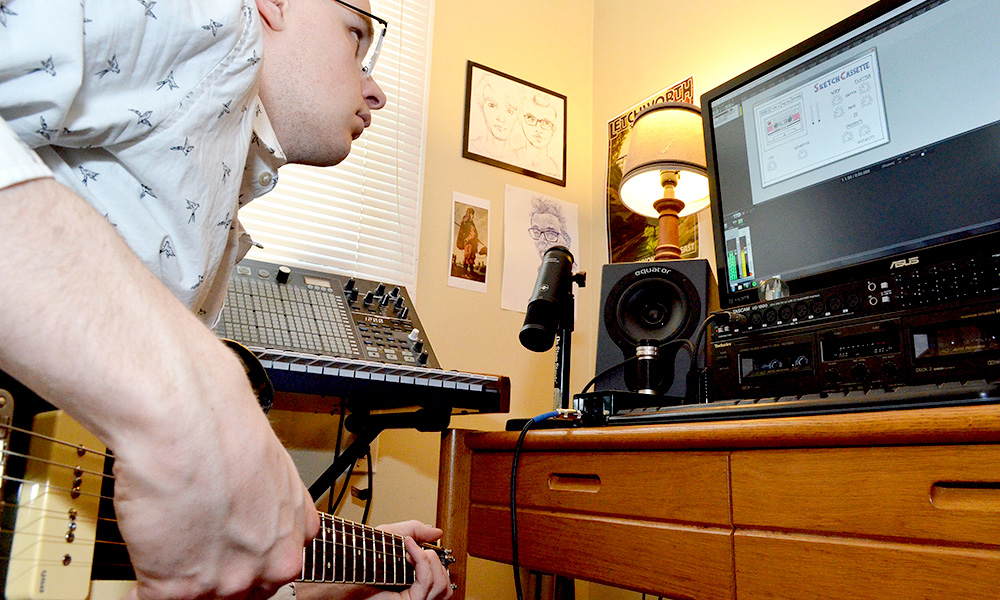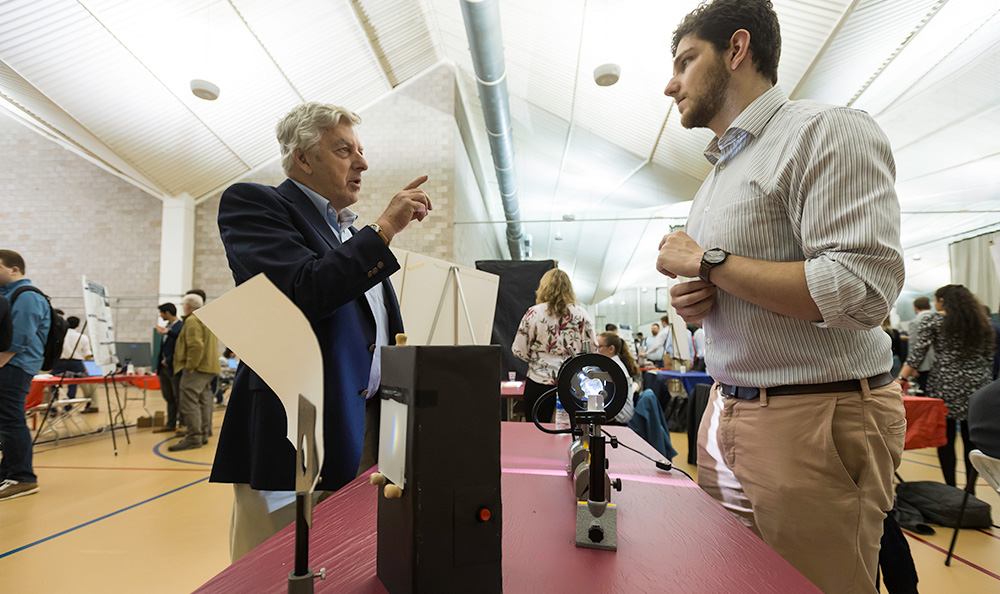Hannah Goldring ’19 decided to major in biomedical engineering at the University of Rochester because “it seemed like a way that I could make a direct impact on people.”
Goldring and three of her classmates — Rebekah Abrams ’19, Taryn Milnes ’19, and Olivia Uttamsingh ’19 — have enjoyed the opportunity to do just that with their senior design project.
Working with Unistel Industries, a Rochester area company that provides employment opportunities for people with intellectual and developmental disabilities, the students analyzed an assembly line for producing radio dust covers for a defense contractor.
The process, which must meet exacting tolerances, includes fitting plastic knob covers and key rings onto pegs on a wood fixture, so they can be connected with cords that must then be clipped. This assemblage is then lifted off the fixture and hand carried to a toggle press where the clips are crimped. Any excess cord must then be burned off within two millimeters of the crimped clip with a burning blade.
“Some parts of the process are really difficult, requiring a lot of motor skills and focus, and currently only one or two people are trained to do them,” Goldring explained.
And even then, errors creep in. For example, it is easy for the cords to tangle or the clips to shift out of place when the assemblage is picked up and moved to the toggle press.
“We wanted to minimize the number of steps and modify the assembly line to be more accessible to more individuals — so Unistel can not only employ more people who wouldn’t otherwise have the opportunity, but can also switch people around who are doing the tasks in case someone is out ill,” Goldring says.
The students created a 3D-printed, adjustable platform that fits on the toggle press, where the knobs, key rings, cords, and clips can be connected and then crimped in one place, with no picking up and carrying in between.
The students also came up with a more powerful fume absorber, with an extra filter, to better protect workers from the fumes created when the excess cord is burned off.
They even devised a long-handled, tong-like device that workers can use to hold the excess cord up to the burning blade. This minimizes the chances of fingers getting burned, and it automatically burns enough of the excess cord to meet the two millimeter requirement.
Much of this was done on students’ own initiative. “When we got there, they told us to do whatever we thought was needed,” Abrams says.
“It was definitely open-ended,” Milnes adds. “For a lot of senior design projects, the clients present a specific problem and ask you to solve it. We had the additional challenge of finding the problems, and then solving them.”
Unistel has been “very encouraging,” Milnes says. “They’ve been more than flexible; they’ve answered our questions.” And they’ve given the students positive feedback. “It’s been a great partnership.”
First all-female team to compete
The students presented their project at the CREATE (Cultivating Resources for Employment with Assistive Technology) competition sponsored by the New York State Industries for the Disabled. A total of 21 teams of college students entered, many of them graduate students who had worked on their projects full time for two years.
The Rochester team, called THOR Designs, placed seventh, and “received high praise from judges and participants for our design” Goldring says. THOR Designs was the first all-female team to compete.
The project was satisfying, the students say, because they felt they were making a real difference for workers with disabilities. They say the project was a good learning experience as well.
“Working with a customer has given me experience that I could use for consulting, or other jobs where you have to work with other companies,” says Goldring.
Working as a team — not just for a week or two on a classroom project, but for several months on a senior design project — was also useful.
“I think I learned more about my personal strengths by being in this group,” Milnes says, “and realizing that when I didn’t know something, someone else in the group did. And I could admit that.”
“What I’ve liked the most about the biomedical engineering program here is that it is super collaborative,” Abrams adds. “I think engineers get a bad rep sometimes, for being a little antisocial, and not being able to work with people so well. This program really challenges us to make sure we defy that stereotype, and that we are able to work really well as a team.”



